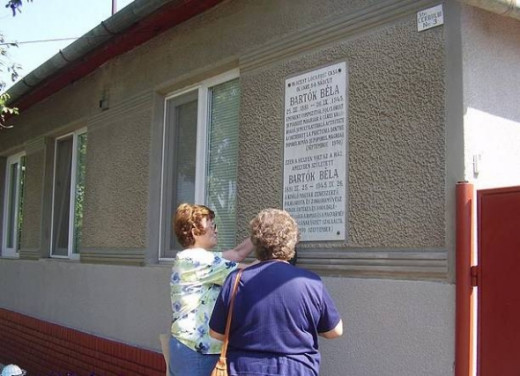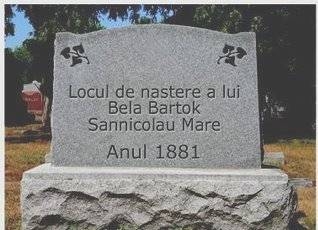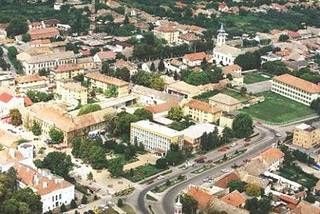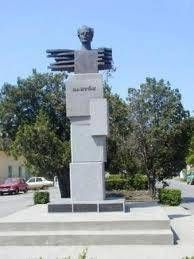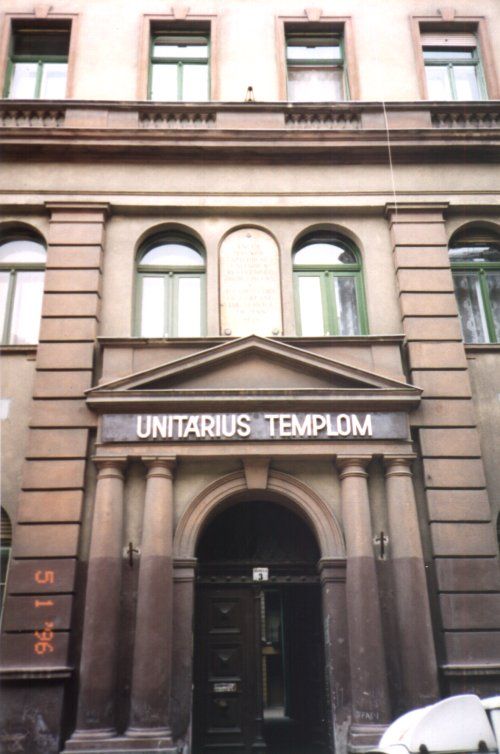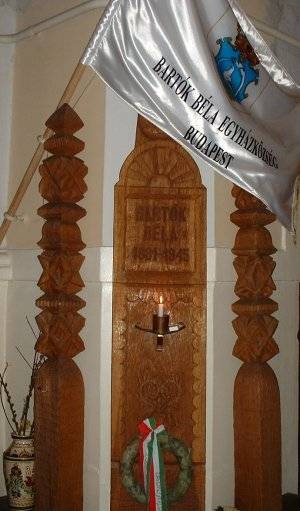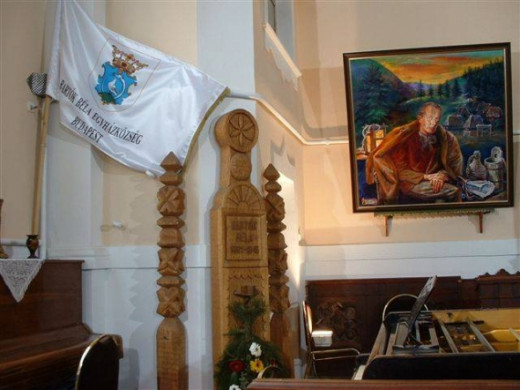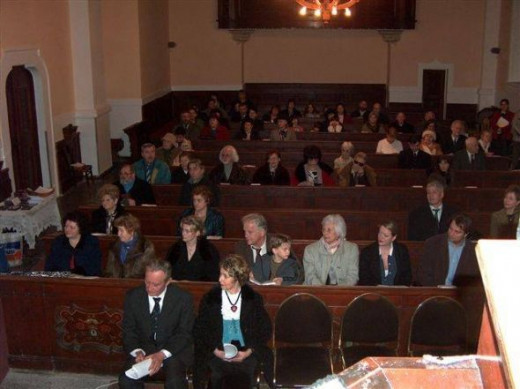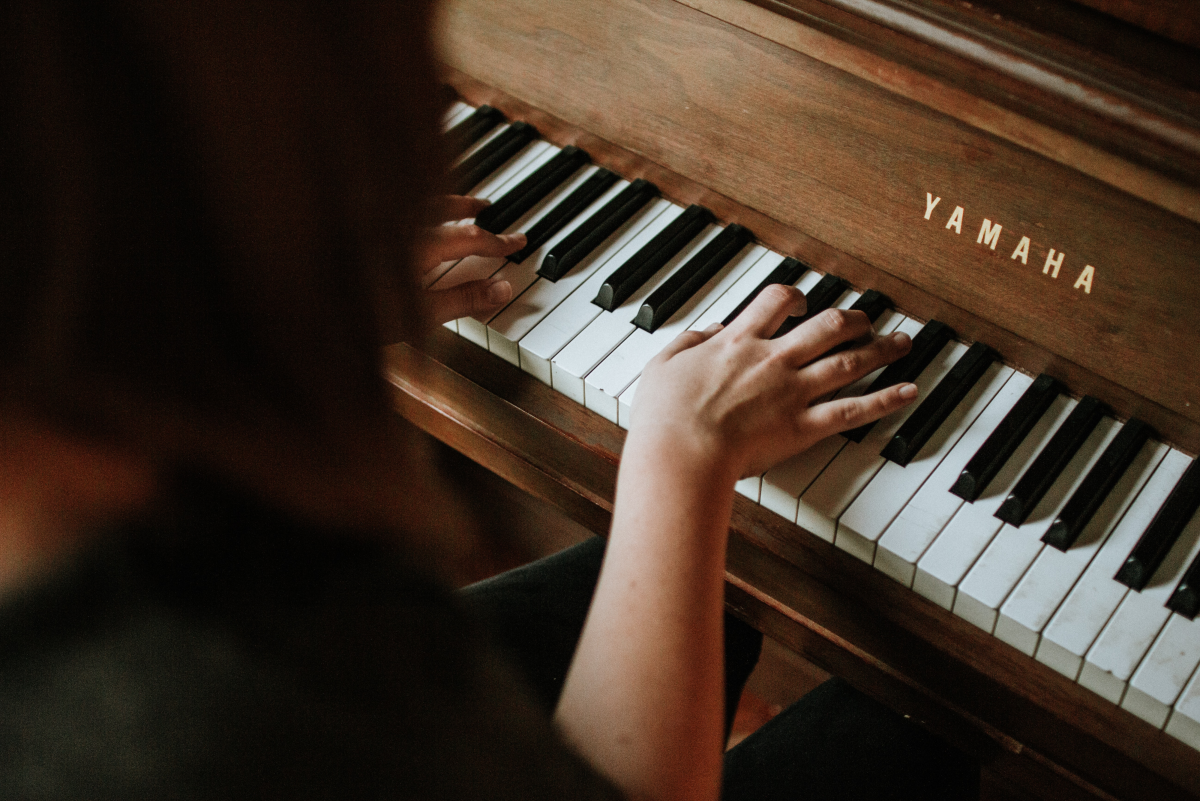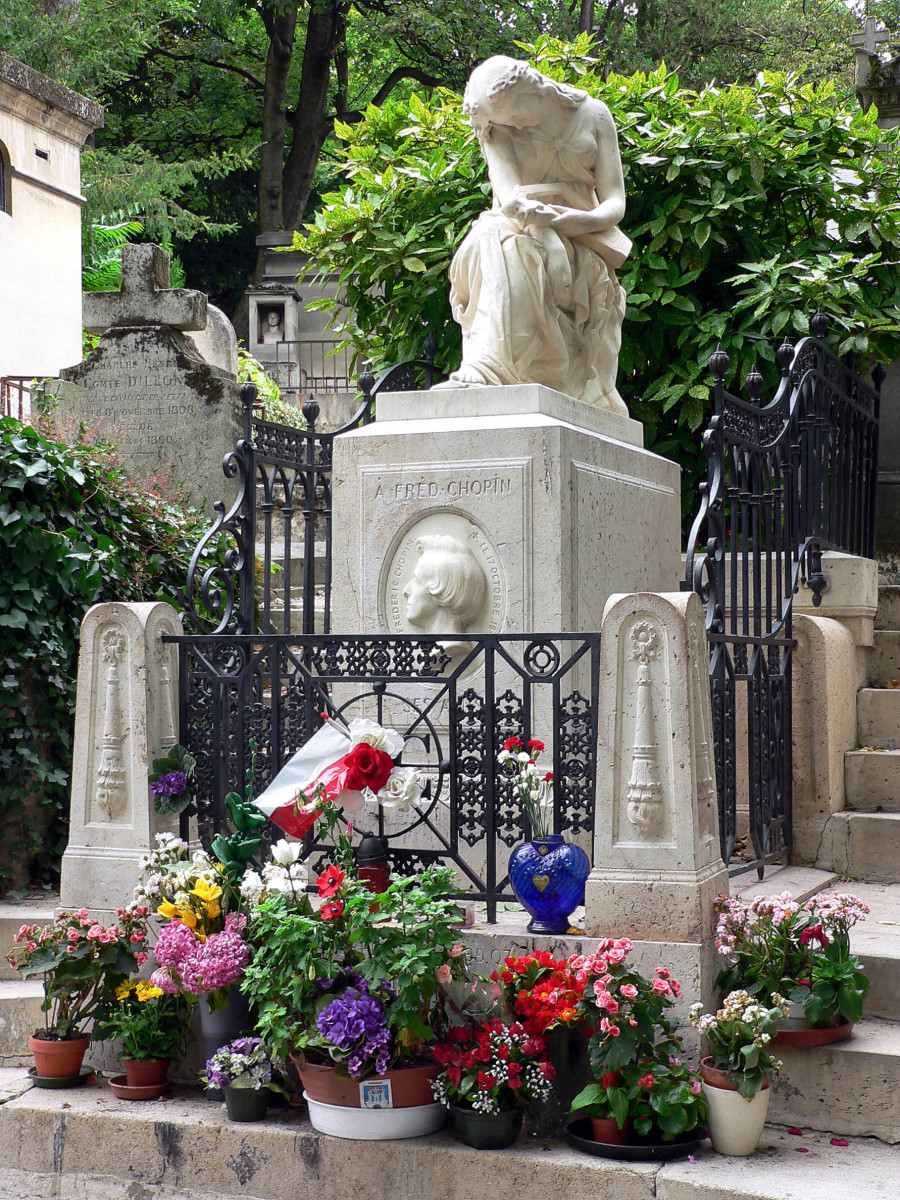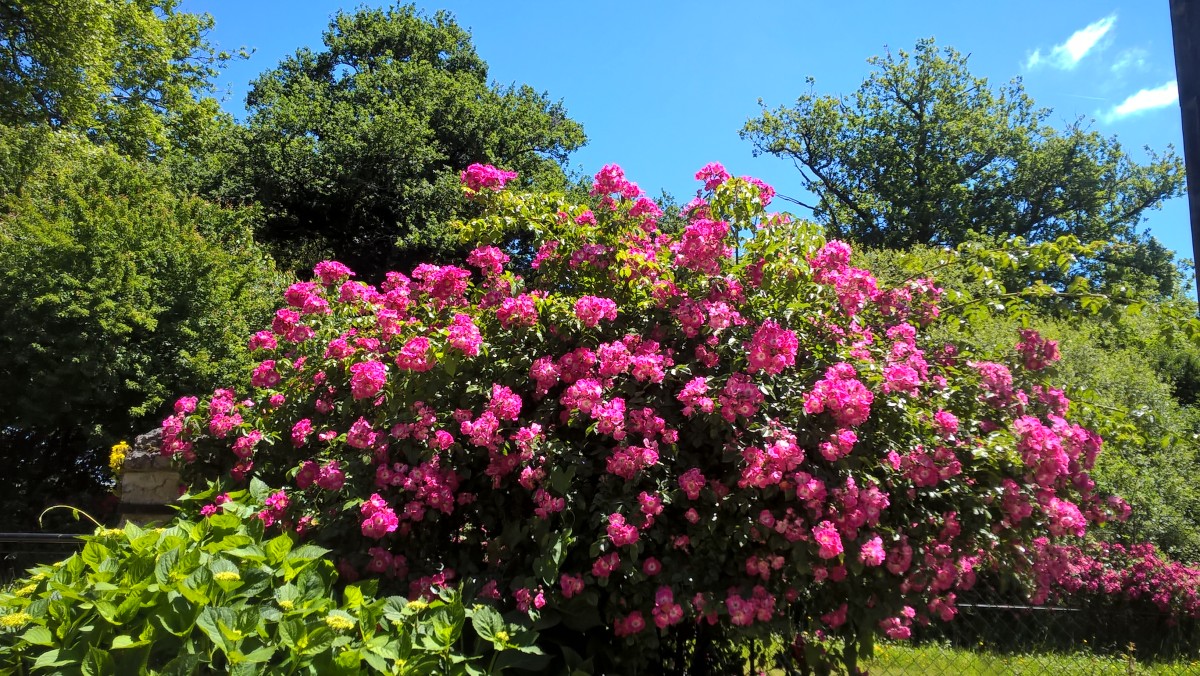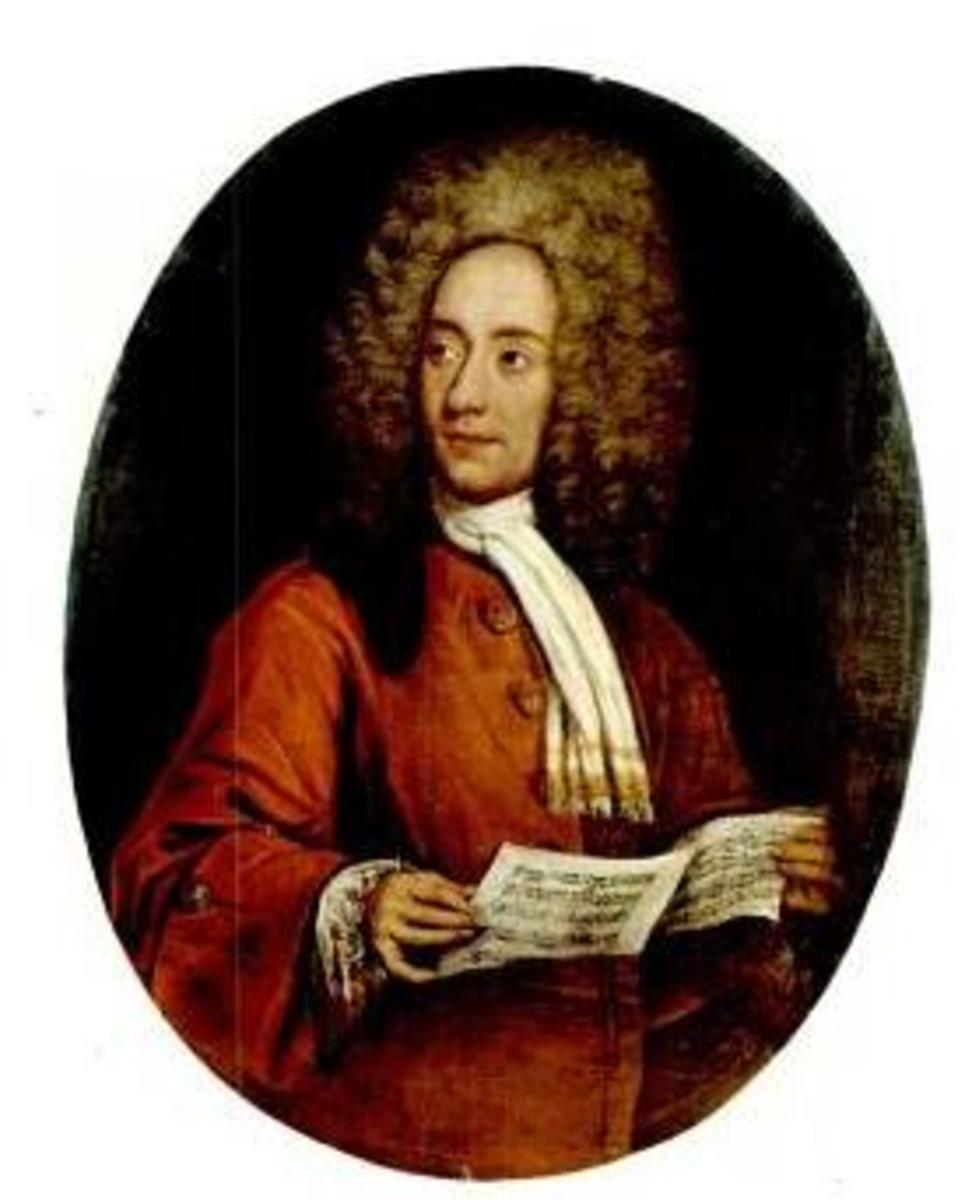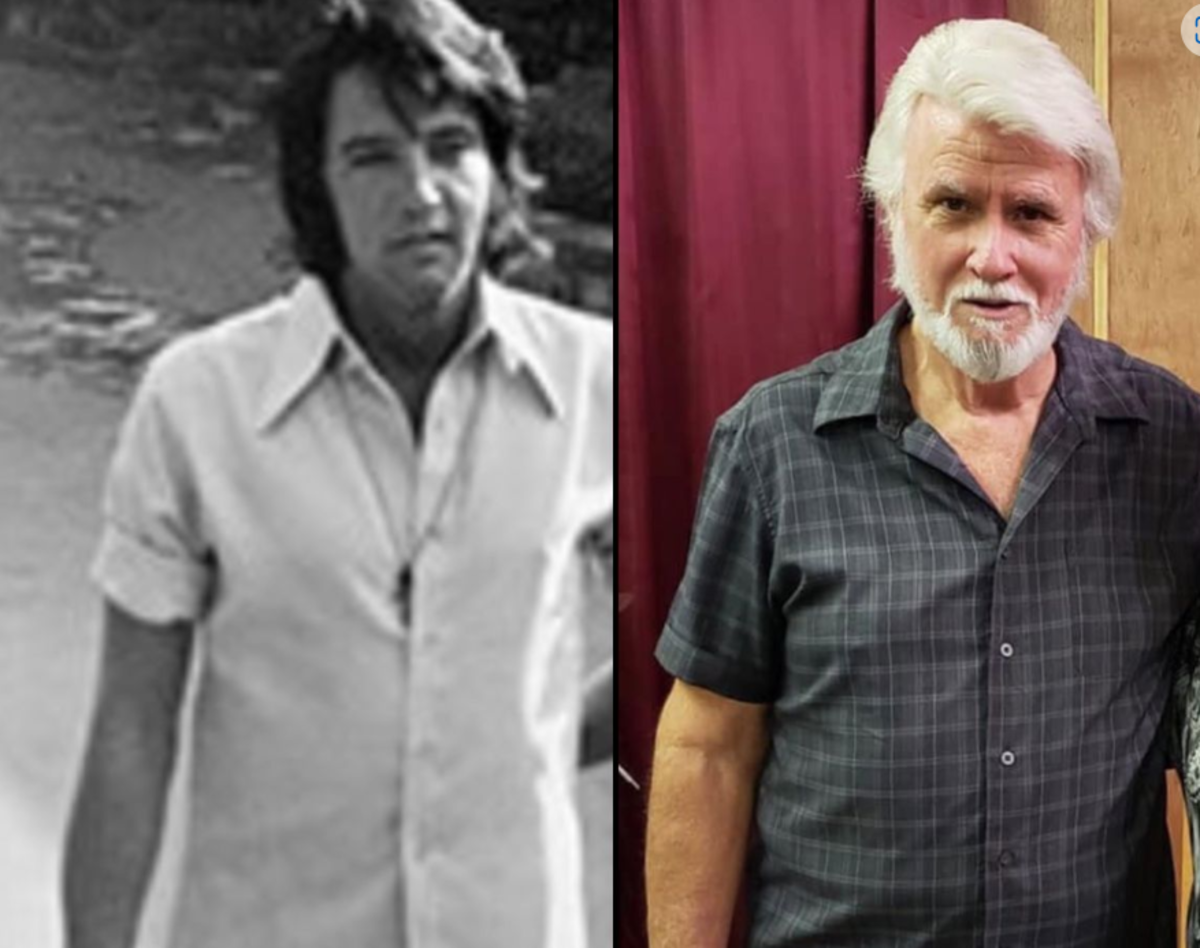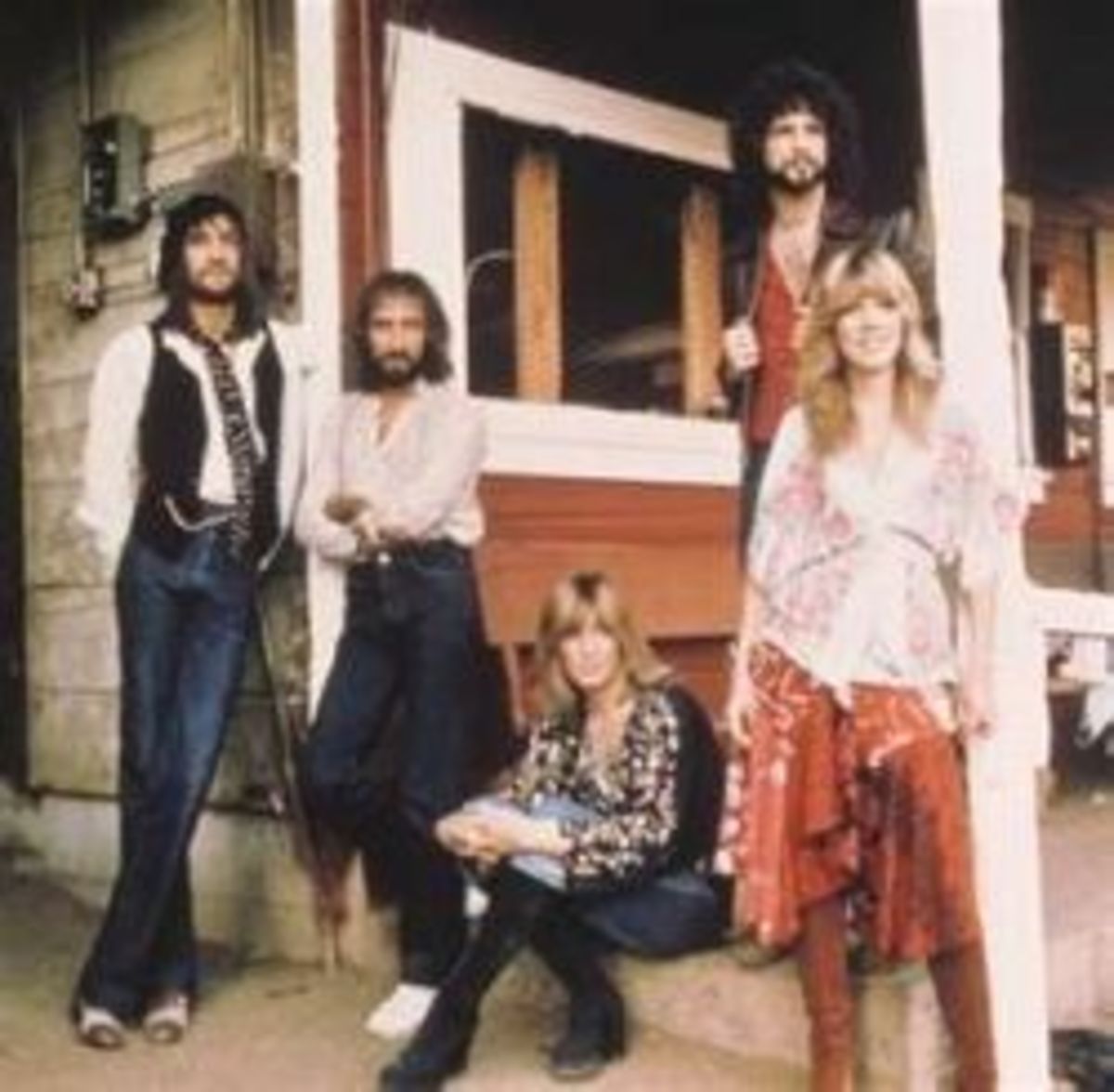Bela Bartok Biography And Music
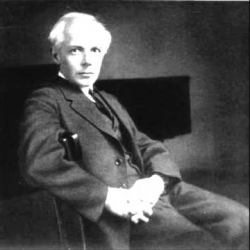
Who Was Bela Bartok?
Bela Bartok (1881-1945) is internationally recognized as one of the greatest musicians and composers of the twentieth century.
So why another page about this famous composer? As a child I practically grew up with his music. My family is distantly related to his (from my father's side) so a few years ago I spent a lot of time researching him and his work. I wanted to know who he really was.
This page is created as a homage to the wonderful person and composer who enchanted so many people with his ethnomusic style.
It provides an overview of Bartok's life and music starting from his early years until his very last when he passed away at the age of 64 in New York from a complication of leukemia, of which he was suffering at the time.
You can also shop for his music and books about his life and his compositions.
The images on this page are either public domain, creative common pictures on Flickr, or pictures that I have actually taken while traveling to Romania and Hungary a few years back.
The current picture is public domain, sourced from Wikimedia.
The Life and Music of Bela Bartok

I cannot conceive of music that expresses absolutely nothing. ~
Bela Bartok
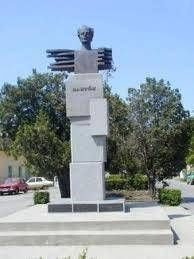
The Early Life Of Bela Bartok
Bela Bartok was born in 1881 in Nagyszentmiklos, a typical village in Banat that was at the time part of the Austro-Hungarian empire (which became Sinnicolau Mare after the Treaty of Trianon, when the entire Transilvania got taken over by Romania).
As a small child he was isolated from his friends and peers due to a severe case of smallpox, which kept him quarantined at home.
During this period he spent a great amount of time listening to his mom, Paula, playing the piano (she was a piano teacher), who eventually realized the potential that the young Bela had for music and started to encourage his musical inclinations.
At the age of 8, after his dad died in 1888, he and his sister Elza moved with his mom to the Nagyszolos (at the time Hungarian territory, which became eventually part of Ukraine). This is where he wrote his first pieces of music at the age of 9 in 1890.
In 1903 he returned to his native place where he gave his very first concert.
(The image here shows a statue of Bela Bartok in his natal place, Nagyszentmiklos - scanned it from postcard i bought)
Photos and Maps About Nagyszentmiklos, Bela Bartok's Birthplace - (Sinnicolau Mare)
Click thumbnail to view full-size





Have you ever heard of the composer Bela Bartok?
Bartok and His World

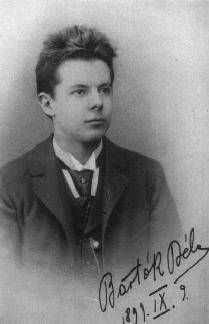
Bela Bartok - During His Studies
At some point he moved to Pozsony (Hungarian name for Bratislava) in Slovakia, his mother's native place. Here he studied piano with famous composers and teachers. It is interesting though that he learned the art of composing on his own, by studing the piano scores.
He was strongly influenced by Erno Dohanyi, another famous composer just 4 years older than him, whom he followed in 1899 to Budapest in Hungary to the Academy of Music.
This is where he really started to to plant the seeds for a style of music for which he will always be remembered, ethnomusicology.
Ethnomusicology is a perfect symbiosis between his Hungarian nationalism and influences of other composers. In 1903 he created his first ever known major piece, Kossuth, which is a symphonic poem dedicated to Kossuth Lajos (a well known hero in Hungary who fought for freedom in the 1948 revolution).
Once he left his official studies at the Academy, he became a concert pianist, thus starting his new career as a real musician.
After graduating from the Academy, he returned in 1907 to become a piano instructor, a position that he held for over 25 years.
(The image here shows Bela Bartok at his graduation in 1899 - public domain)
Bela Bartok musing...
"...I consider myself a Hungarian composer. The fact that the melodies in some of my own original compositions were inspired by or based on Rumanian folk-songs is no justification for classing me as a compositorul român;..."
Bela Bartok in his letters discussing on being labeled a Romanian composer
The year 1904 was one of the important milestones in Bartok Bela's life. He was still living in Pozsony when he one day heard Lidi Dosa, a Transylvanian servant, singing a folk song called Piros Alma (red apple). This is when he truly became bewitched by the Transylvanian folk music.
The fact that just a couple of years later he met and become close friend with Kodaly Zoltan, one of the major Hungarian composers at the time, strengthened his love for folk music. Kodaly was at the time collecting Hungarian folk music recordings, and this prompted Bela to start his own collection as well.
They published together the Magyar nepdalok (Hungarian Folksongs), made of 10 - 10 folk songs each for piano.
While Kodaly was mostly interested in Hungarian traditional music, Bela Bartok liked also listening to other folk music, such as the Romanian, Bulgarian, Turkish, Serbian, Slovakian and North African as well.
From here onwards his major calling in life was set: writing pieces with a strong multi-ethnic influence. He spent a lot of time studying ethnic music of various places, one of the major one being Transylvania.
(Here is an image of Bela Bartok and his friend Kodaly Zoltan working together as collectors of folk music - picture in public domain.)
Kossuth & The Wooden Prince By Bela Bartok
Bela Bartok Composition Called Kossuth
Hungary vol.1 / Hungarian folksong Bela Bartok
Bela Bartok musing...
The principal scene of my research has been Eastern Europe. As a Hungarian I naturally began my work with Hungarian folk music, but soon "extended it to neighbouring territories-Slovakian, Ukrainian, Rumanian."
Bela Bartok
Bluebeard's Castle by Bela Bartok

The Adult Years Of Bela Bartok
I guess we could say that his adult years really started in 1909 when he married Ziegler Marta. They had a son one year later, whom they named Bela Jr.
One of his major life transformations happened in 1916 when he converted from Catholicism to Unitarianism, a less stricter church (just a side note, I am also Unitarian and many people in Transylvania are).
Bela Bartok Jr wrote at some point that his father joined the Unitarian church and faith because he found it to be "the freest, most humanistic faith".
He was not a very religious person, but he was a nature lover. In fact throughout his life he collected many insects, plants and minerals.
As a matter of fact, many people say that he was a rather withdrawn person, not very outgoing. He loved nature more than being with many people. His first mature work, the opera Bluebeard's Castle, shows this alienation and sense of withdrawal.
Bluebeard's Castle by Bela Bartok
Unitarian Church Photos Related To Bela Bartok
Click thumbnail to view full-size



Mikrokozmosz by Bela Bartok

Bela Bartok - His Mature Works
His austere, pesimistic and withdrawn philosophy translated into the next couple of his works: The Wooden Prince in 1917, along with the ballet-pantomime The Miraculous Mandarin.
In fact The Miraculous Mandarin has caused quite an uproad in 1926 when it was premiered. The story talks about robbery, prostitution and murder, subjects that the population at that time was not very cozy with. After the premiere the audience left the room in a rage and this very piece was banned from being played again.
Luckily by this time his reputation as an excellent musician and modern composer has already been established, especially with the two violin sonatas that he wrote in 1921 and 1922, and with his Dance Suite that he wrote in the following year, 1923.
As for his private life, he divorced from Marta in the very same year, in 1923, and married right away a pianist student Ditta Pasztory with whom he had a son, Peter, in 1924.
If you are familiar with his important work, Mikrokozmosz, a 6 volume collection of piano pieces, you might not know that he composed it for his son's music lessons.
Bela Bartok's Mikrokozmosz
Have you listened to any of Bartok's compositions?
A nation creates music--the composer only arranges it.~
Bela Bartok
Bartok Bela's Best Music Between 1930-1940
It is said that his best music was created in the 1930s. Much of his music was commissioned outside of Hungary. For example in 1934 he wrote the String quartet for the American Elisabeth Sprague Coolidge. This was his fifth string quartet.
In 1936 he wrote Music For Strings Percussion And Celesta, commissioned by the Swiss conductor Paul Sacher.
In 1937 he wrote Sonata for Two Pianos and in 1939 Divertimento. Contrast was written in 1938 for the Benny Goodman, a famous clarinetist.
While his work flourished, the difficult political times caused him to leave Hungary in 1940 when he left for American along with many other emigrants. While his wife went along with him, his son Peter went two years later. His first son, Bela Bartok Jr never left Hungary.
Music For Strings Percussion And Celesta by Bela Bartok
Concerto for Orchestra; Music for Strings, Percussion and Celesta; Hungarian Sketches - by Bela Bartok

Bela Bartok's Last Years And Work In America
While he did get his American citizenship in 1945 (the very year he died) he never saw this country as his own. He saw it more as an exile from home. While in Europe he was already quite a famous composer as a pianist, in the US he was practically unknown.
Although he was not completely poor, he was not well off either, and he and his family lived in a relative obscurity, something that he was not quite used to from back home.
His health started to deteriorate right after he went to the US. Pain in the shoulders, stiffness, all these were symptoms that he was fighting with. Only in 1944 doctors diagnosed him with leukemia, however there was too late to do anything about it at this time.
During his last years in the US, he creates some of his best work. He wrote Concerto for Orchestra commissioned by Serge Koussevitsky. This is in fact Bartok's most famous piece. He also wrote in 1944, just one year before his passing, Sonata for Solo Violin commissioned by the famous Yehudi Menuhin.
In 1945 he composed his Piano Concerto No. 3 which was his final completed work. He started in 1945 Viola Concerto, however sadly he never got to finish it.
On September 26, 1945 Bela Bartok passed away in a hospital in New York City. His family was with him, both his son and his wife holding his hands during his final moments. He was only 64.
(Shown here is a plaque of Bela Bartok mounted on the side of his house in Manhattan where he spent the last year of his life. Credits for the photo go to Teckie Kev)
How do you like Bela Bartok's works so far?
Concerto for Orchestra by Bela Bartok
Main Works By Bela Bartok
Here is a compiled list of Bela Bartok's major works for piano, chamber music, his stage works and his orchestral works.
While he lived a relatively short life, passing away after only 64 year, he created and composed quite a large number of unique and wonderful pieces.
If you are a collector of his work, check what you have against the list below. If you do have something it is not mentioned here, please leave your comments at the bottom of this article.
Main Piano Works by Bela Bartok
- 1908 - 14 Bagatelles
- 1908 - Children
- 1911 - Allegro Barbaro
- 1913 - 18 Easy Pieces
- 1915 - Romanian Folk Dances
- 1926 - Nine Little Piano Pieces
- 1926 - Out Of Doors
- 1926 - Sonata for Piano
- 1933 - Three Rondos
- 1926-1933 Mikrokozmosz
Orchestral Works by Bela Bartok
- 1903 - Kossuth
- 1904 - Rhapsody and Scherzo for Piano and Orchestra
- 1905 - First and second suite
- 1923 - Dance
- 1936 - Music for Strings, Percussion and Celesta
- 1939 - Divertimento for string orchestra
- 1943 - Concerto for Orchestra
Stage Works By Bela Bartok
- 1911 - Bluebeard's Castle, his only opera dedicated to his first wife Marta
- 1914-1916 - The Wooden Prince (balet)
- 1918-1919 - The Miraculous Mandarin (balet)
Main Writings by Bela Bartok
- 1906 - Hungarian Folksongs together with Kodaly Zoltan
- 1923 - The Maramures Romanian folk music
- 1924 - The Hungarian folk song
- 1934 - Folk music and the music of neighboring people
- 1935 - The Roumanian Christmas Carols
Chamber Music by Bela Bartok
- 1908 - I String Quartet
- 1917 - II. String Quartet
- 1921 - I Sonata for violin and piano
- 1922 - II. Sonata for violin and piano
- 1927 - III. String Quartet
- 1928 - IV. String Quartet
- 1928 - I and II Rhapsody
- 1931 - 44 Duos for Two Violins
- 1934 - V String Quartet
- 1937 - Sonata for Two Pianos and Percussion
- 1938 - Contrasts for Violin, Clarinet and Piano
- 1939 - VI. String Quartet
- 1944 - Sonata for Solo Violin
Bela Bartok As He Should Be Remembered
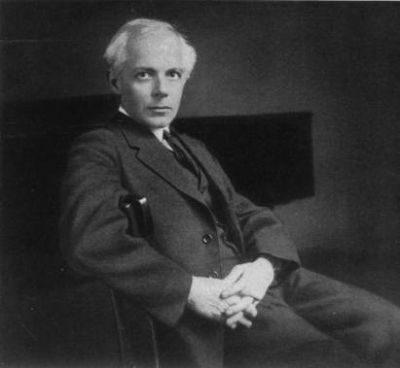
Official and Unofficial Sites Dedicated To Bela Bartok - (Note: You're leaving Squidoo when clicking on these links)
- Blog dedicated to Bela Bartok
All about Bartok's early life in Sinnicolau Mare - Wikipedia article on Bartok Bela
Wikipedia article dedicated to Bela Bartok (in English) - Hungarian Wikipedia page on Bela Bartok
This is the Hungarian version of the Wikipedia article about Bela Bartok - Romanian Wikipedia page on Bela Bartok
This is the Romanian version of the Wikipedia article on Bela Bartok - Bela Bartok Museum
The Bela Bartok Museum in Budapest - Bela Bartok's Internet Site
In English, Hungarian and German, this is the internet website of Bela Bartok - Bela Bartok Archives
Archives of Bela Bartok from the Institute for Musicology of the Hungarian Academy of Sciences - Wikipedia Article About Peter Bartok, Bela Bartok's Son (in Hungarian)
If you want to know more about the youngest son of Bela Bartok, this Wikipedia entry has some information. Written in Hungarian (could not find English entry)


